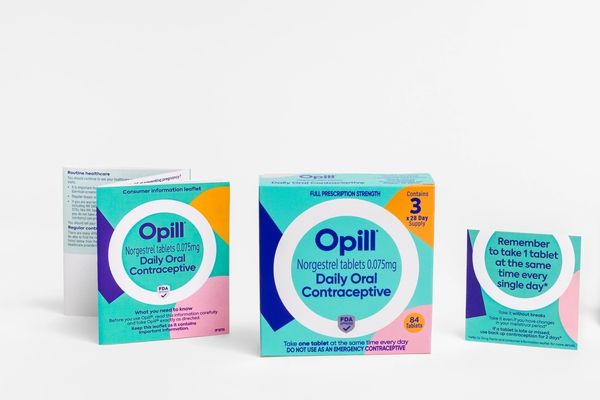
Medicare coverage for people 65+ comes in four parts: Part A (care in hospitals, skilled nursing facilities, hospice and at home; Part B (doctor’s bills, outpatient care, medical equipment, preventive services and home care); Part C (also known as Medicare Advantage, the alternative to Traditional Medicare sold by private health insurers) and Part D (prescription drugs).
Of those, Part B has the widest array of health benefits. It also has the widest array of coverage exclusions.
When to get Medicare Part B
If you’re getting Social Security benefits, you’ll automatically get Medicare Part B at 65. Otherwise, you generally need to sign up for Part B at 65. If you don’t, you may owe a late enrollment penalty for as long as you have Part B. The penalty is as much as 10% of Part B premium for every 12 months you could have had Part B but didn’t enroll.
If you’re 65 or older and working, you’ll generally need to enroll in Part B if your employer has fewer than 20 employees, notes Philip Moeller, author of “Get What’s Yours for Medicare.” At a larger employer, you can postpone signing up and won’t incur a late enrollment penalty provided you enroll within eight months of when your employer coverage ends.
How much Medicare Part B costs
Part B’s monthly premium is sizable—$164.90 in 2023 (which translates to nearly $2,000 for the year). It can triple to as much as $560.50 a month ($6,732 for the year) if you’re a high-income beneficiary hit with the so-called IRMAA surcharge; IRMAA stands for Income-Related Monthly Adjustment Amount. For 2023, IRMAA kicks in if your 2021 income was over $97,000 and you’re single; above $194,000 for married couples filing joint tax returns.
You may be able to get assistance paying Part B premiums, though.
Some members of Medicare Advantage plans pay for some or all their premiums; you must be enrolled in Medicare Parts A and B to be eligible for a Medicare Advantage policy. If you’re in a Medicare Advantage plan, you’ll pay more to see doctors or health providers who don’t accept Medicare assignment.
Three little-known Medicare Savings Programs help pay Part B premiums for low- and moderate-income Medicare beneficiaries. Eligibility in 2023 requires monthly incomes below $1,235 to $1,600 or below $1,663 to $2,239 for married couples.
The annual out-of-pocket deductible for Medicare Part B is $226 in 2023. After meeting the deductible, you generally pay 20% of the Medicare-approved amounts if your doctor or health provider accepts Medicare assignment. Part B pays the remaining 80%.
Many people with Traditional Medicare buy Medigap, or Medicare Supplement Insurance policies, to assist with their out-of-pocket Part B costs. But you must be enrolled in Part B before you can apply for one.
What Medicare Part B covers
Medically necessary outpatient care
Medicare defines this type of care as “services or supplies that are needed to diagnose or treat your medical condition and that meet accepted standards of medical practice.”
So, a visit to a doctor’s office or clinic (or a telehealth visit) and lab tests, X-rays, MRIs, CT scans and EKGs prescribed by your doctor are covered by Part B. Similarly, Part B covers medical services received at a hospital when you’re not admitted and ambulatory surgical center service fees. Ambulance services for medically necessary services are covered, too.
Flu shots, hepatitis B shots, pneumococcal shots and COVID-19 vaccines and testing are covered by Part B. You’ll pay nothing for flu shots or COVID vaccines and testing.
Medicare Part B also sometimes covers a second opinion for medically necessary surgery that isn’t an emergency.
Psychotherapy visits for depression and anxiety are covered, as are medically necessary and prescribed occupational therapy services to help you perform activities of daily living and physical therapy services.
Chemotherapy in a doctor’s office, clinic or hospital outpatient setting if you have cancer is covered by Part B, too.
Chiropractic services are sometimes covered, sometimes not. Part B covers manipulation of the spine by a chiropractor to correct a subluxation (when the spinal joints fail to move properly, but the contact between the joints remains intact). It doesn’t cover other chiropractic services or tests.
Part B also covers up to 12 acupuncture visits in 90 days for chronic lower back pain that isn’t associated with surgery or pregnancy, plus another eight sessions if you show improvement.
For people with diabetes, Part B covers glucose meters, test strips, lancets and insulin when patients use insulin pumps.
Also, “Part B covers infusions or injections administered on an outpatient basis, such as the recent approval of the Alzheimer’s infusion medication, Leqembi,” notes Moeller.
Traditional Medicare’s Part B doesn’t cover most dental care, eye exams, routine physical exams, hearing aids, cosmetic surgery, concierge care or nursing home care. But Medicare Advantage plans often have coverage for vision, hearing and dental services.
Home health care
Part B covers home health care from a Medicare-approved home health agency if you are homebound and need skilled nursing care. “For Part B short-term, skilled nursing care in the home, you have to jump through some hoops,” says Moeller.
Unlike Part A’s home health care coverage, however, you needn’t have stayed in a hospital to qualify for Part B home care benefits.
Medicare won’t cover homemaker services, meal delivery or personal care such as bathing or help getting dressed from home health aides when that’s the only care you need.
Durable medical equipment
Medicare also covers medically necessary items such as oxygen equipment, wheelchairs, walkers, CPAP machines and hospital beds if a Medicare-enrolled doctor or other health provider orders them for use in your home.
You must get these items from a Medicare durable medical equipment supplier. “The big issue with Part B is consumers need to shop for medical equipment, in my view, just as much as they would shop for a retail drug,” Moeller says.
As of July 1, 2023, a month’s supply of Part B-covered insulin for a pump can’t cost you more than $35; the Part B deductible won’t apply.
Normally, Medicare doesn’t pay for eyeglasses. But Part B will cover a pair with standard frames after cataract surgery when an intraocular lens was implanted. (It won’t pay for eyeglasses extras such as tinted lenses, though.)
Preventive services
Medicare Part B defines preventive services as “health care to prevent illness (like the flu) or detect it at an early stage, when treatment is most likely to work best.”
This includes the “Welcome to Medicare” preventive visit during the first 12 months you have Part B and your yearly “Wellness” visit once you’ve had Part B for more than 12 months.
Screenings covered by Part B include ones for cardiovascular disease, cervical and vaginal cancer, colorectal cancer, depression, diabetes, Hepatitis B and C, HIV, lung cancer, prostate cancer and sexually transmitted infections.
Medicare Part B also covers annual glaucoma tests if you are at high risk for the eye disease, as well as annual mammograms.
Where to get questions answered
If you have Part B questions, look for answers on Medicare’s site or by calling Medicare (1-800-MEDICARE) or your doctor.
State Health Insurance Assistance Programs, or SHIPs, can also provide free assistance.










